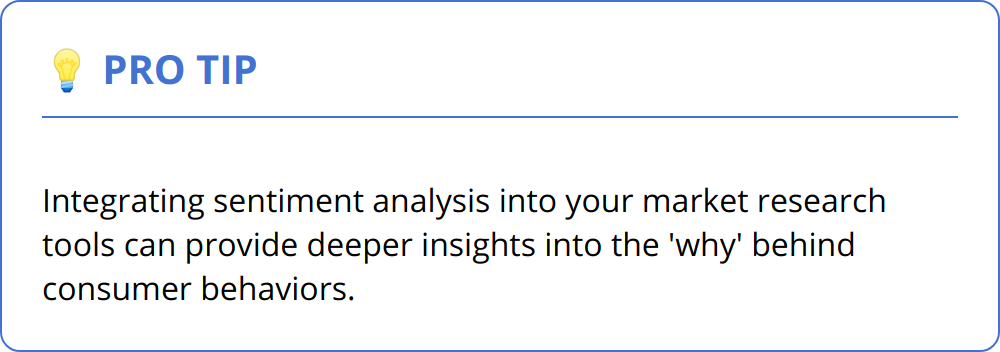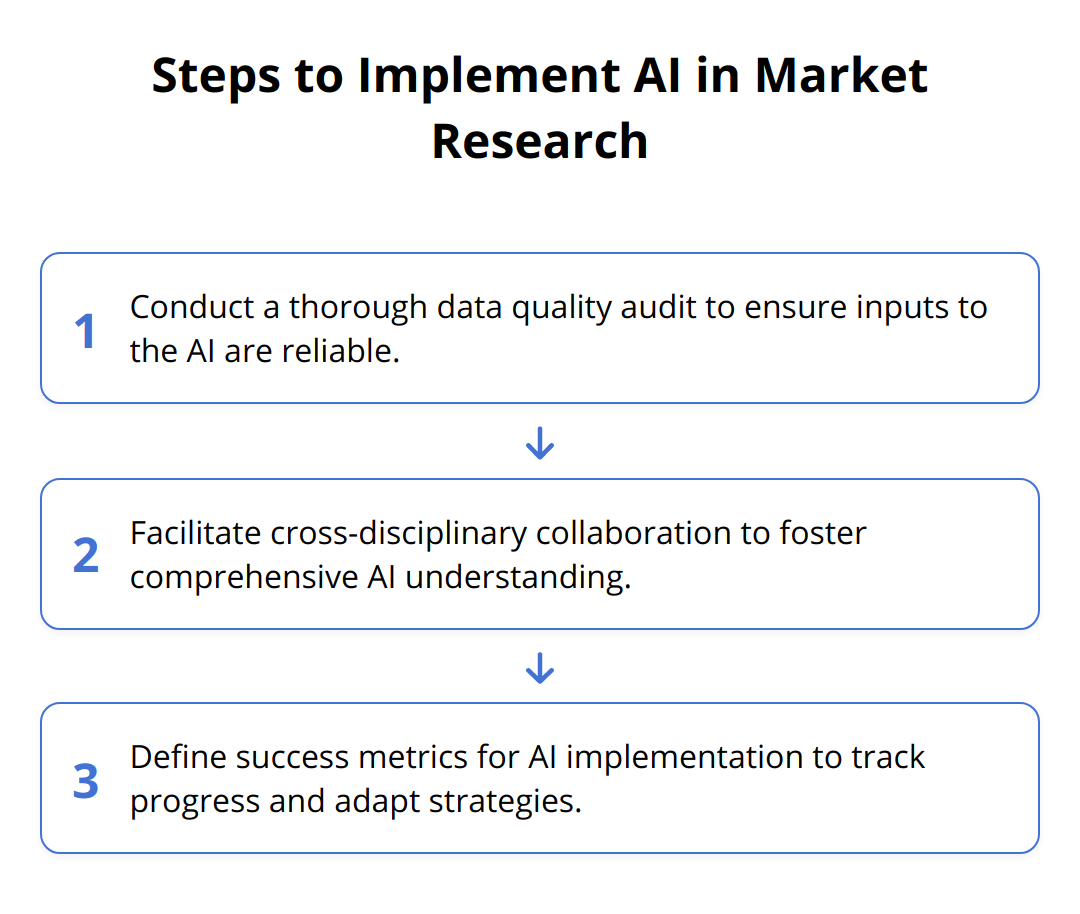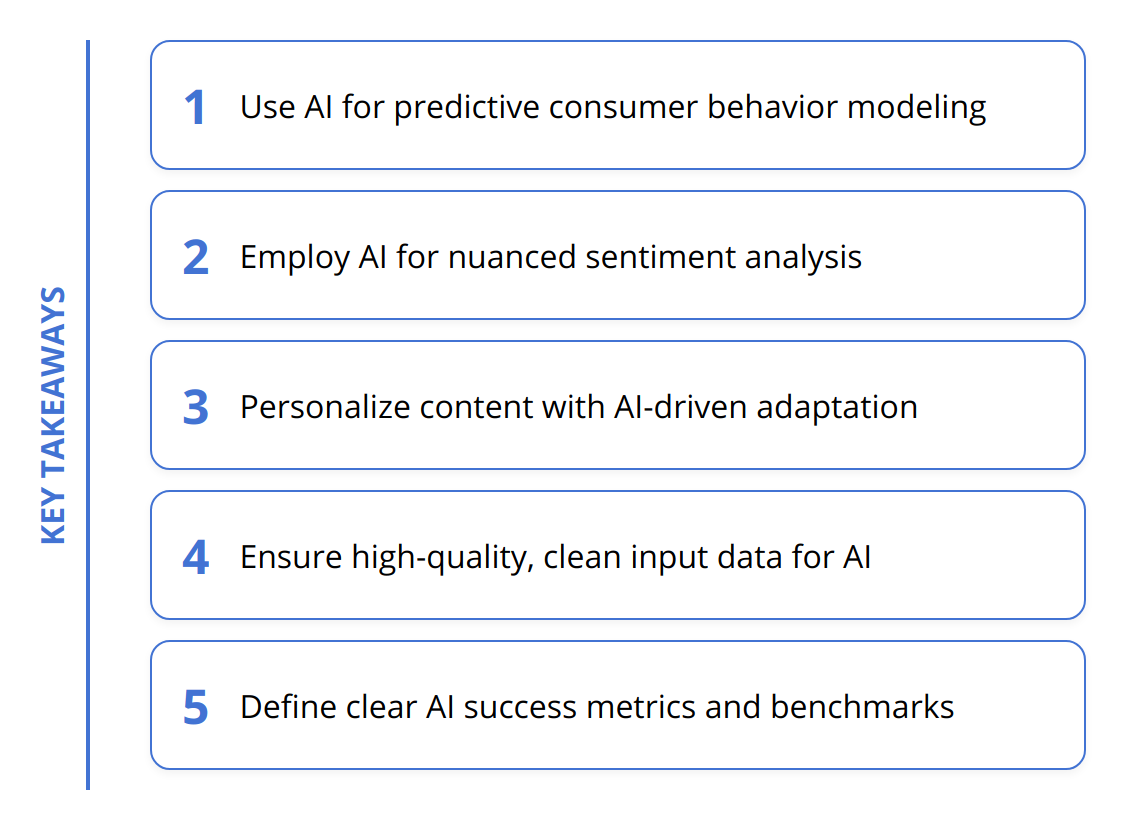We at Emplibot recognize the transformative power of Generative AI in reshaping market research. Today’s businesses need tools that not only understand data but can also predict and respond to market dynamics swiftly.
By harnessing Generative AI, companies can uncover rich consumer insights and craft personalized strategies that resonate with their target audiences. This blog post is your guide to integrating this game-changing technology into your market research toolkit, opening up new opportunities for growth and innovation.
Deciphering Generative AI for Market Research
Generative AI is rapidly becoming an essential tool in market research, offering an edge to businesses that traditionally relied on historical data and trends. At its core, Generative AI represents systems that can generate new data points, content, or patterns without explicit instructions. Think of it as an artist with limitless creativity, constantly creating original works influenced by their experiences, or in the case of AI, the input data.
Harnessing Creativity for Insight: Applications of Generative AI in market research are booming. One potent use is in unsupervised data analysis, where AI identifies patterns and trends that humans might miss. It also shines in sentiment analysis, deciphering complex human emotions from text data to gauge public opinion on products or services. Some platforms use Generative AI to extract themes and concepts from a vast range of unstructured data, offering businesses a distilled view of customer feedback, allowing them to adapt quickly to consumer needs. These applications are more than neat tricks; they’re game-changers, offering rich, nuanced insights at speeds and scales we’ve never seen before.

Unlike traditional AI, which often acts on pre-defined algorithms and datasets to provide answers or recommendations, Generative AI creates new content, potentially offering novel solutions or ideas. It’s proactive rather than reactive, providing a semblance of an understanding beyond the binary logic of traditional systems.
Here are some practical use-cases showing the distinct advantages of Generative AI:
-
Predictive Modeling: By analyzing existing consumer data, Generative AI can predict future buying patterns and market trends, helping you stay ahead of the curve.
-
Automated Content Creation: It can generate reports, articles, and social media posts, saving countless hours of human labor.
-
Qualitative Data Interpretation: It interprets open-ended survey responses at scale, allowing for more nuanced consumer insights with minimal manual intervention.
However, unlike traditional AI which tends to be more reliable for predictable, routine tasks, the creative outputs of Generative AI can sometimes be unpredictable and even prone to inaccuracies if not trained and monitored correctly. It requires a deeper understanding and closer oversight to refine its output, as well as a substantial training dataset to learn from.
To truly reap the benefits of Generative AI in market research, consider these actionables:
-
Leverage the Power of Prediction: Use Generative AI to build models that not only decipher current trends but predict future consumer behaviors. This predictive power can be invaluable in staying one step ahead.
-
Scale Up Content Creation: Utilize AI to automatically generate preliminary drafts of market research content, which can then be refined by human analysts for accuracy and relevancy.
-
Dig Deeper Into Data: Employ these AI systems for uncovering subtle, hidden patterns in user feedback and social media discussions that could lead to strategic pivots or product innovations.
It’s important to acknowledge the challenges of implementing Generative AI. You’ll need quality data, and plenty of it, to train your models effectively. Additionally, there’s a learning curve associated with adopting these technologies. Market researchers should start small, running pilot projects to understand the scope of this AI’s capabilities and limitations before a full-scale rollout.
Finally, as you integrate Generative AI into your toolbox, keep ethical considerations in mind. Prioritize consumers’ privacy and be transparent about how AI-generated insights are being used. These steps will not only help maintain public trust but will also position your company as a leader in responsible AI use.

Our efforts in market research must evolve with the times, and Generative AI is undeniably part of that evolution. Such technology promises smarter, faster decision-making—but it’s the human touch that directs its potential toward market success. Use Generative AI wisely, and it will become one of the most powerful tools in your research arsenal, helping to unlock insights that drive business forward.
Gaining Insights with Generative AI
As businesses navigate an ever-changing market landscape, gaining a sharp understanding of consumer behavior is indispensable for success. Generative AI is our ally in this quest, offering deep analytical capabilities that were once the stuff of science fiction. This technology is essentially a goldmine for drawing actionable consumer insights, predicting market tendencies, and tailoring marketing to individual needs.
Spotting Patterns in Consumer Behavior
The cornerstone of effective market research is recognizing and interpreting patterns in consumer behavior. Generative AI excels in this area by sifting through vast quantities of data to identify previously undetected trends. It can, for example, trawl through online reviews or social media chatter to pinpoint what features are most celebrated or what frustrates customers about a certain product. Armed with this knowledge, businesses can refine their offerings to better suit customer preferences.
To take this a step further, tools such as sentiment analysis, incorporated by platforms like Emplibot, can evaluate the emotional undertones of consumer feedback across various digital touchpoints. This helps companies discern not just the “what” but the “why” behind customer attitudes, which is invaluable for any business aiming to connect meaningfully with its audience.
Forecasting Market Dynamics
Predicting where the wind will blow next in the market is a mighty challenge, but Generative AI is changing the game. By analyzing current and historical data, AI models can forecast where a market is heading, whether it’s an upcoming surge in demand for a product category or the potential decline of a once-popular service. This proactive approach lets businesses prepare and adapt in advance, securing a competitive advantage.
Making use of predictive analytics helps firms not just respond to market changes but also shape them. By foreseeing consumer needs, companies can innovate proactively, rolling out new products or services just as the market begins to demand them. Our blog on predictive analytics marketing digs deeper into how you can harness this aspect of Generative AI for your business.
Crafting Tailored Marketing Strategies
Creating marketing that resonates on a personal level is no longer a nice-to-have; it’s expected by consumers. Generative AI plays a crucial role in devising strategies that hit the mark by personalizing the marketing message. It enables a level of segmentation and customization previously unattainable due to the sheer volume of data involved.
For instance, it can draft targeted email campaigns for different consumer segments by analyzing past purchase data and online engagement patterns, ensuring that each message is highly relevant to its recipient. Additionally, AI-driven content creation tools can produce a variety of marketing materials, practically on-demand, each tuned to the preferences of different audience groups.

Here are actionable ways to leverage Generative AI for crafting these strategies:
-
Deep Dive into Data: Continually analyze your customer data to refine and personalize your marketing outreach.
-
Dynamic Content Adaptation: Use AI to dynamically personalize content on your websites and emails based on visitors’ past interactions.
-
Continuous Testing: Always test different AI-generated content and strategies to see what resonates best with your audience.

Embracing Generative AI in market research doesn’t just simplify tasks; it fundamentally augments our ability to understand and predict consumer behavior. This technology is rapidly becoming an integral part of strategic planning for those who intend to remain at the forefront of their industries. Use it judiciously, and you’ll uncover insights that not only illuminate the path to innovation but also drive growth in ways previously unimaginable.
Enhancing Market Tools with AI
With the burgeoning landscape of Generative AI, integrating it into market research is more than a fleeting trend—it’s a strategic necessity. Businesses that succeed in blending AI with traditional research methods can expect a significant uptick in precision and responsiveness. This chapter provides specific steps on how to augment your existing market research apparatus with the power of AI, select the optimal tools that align with your objectives, and ensure your team is primed to leverage these advancements.
Strategically merging AI with conventional market research can yield potent results, enhancing the rigour of tried-and-tested methods with innovative data interpretation and prediction capabilities. One impactful approach is to feed AI-generated consumer insights into SWOT analyses, amplifying the depth and breadth of intelligence gathered. Moreover, Generative AI can bolster competitive analysis, delivering a layer of foresight on possible competitor moves by analyzing emerging patterns across industry data.
Choosing the right Generative AI tools hinges on clearly defined research goals and pain points. Pinpoint where your research process lags—are you drowning in unstructured data or struggling with predictive accuracy? Tools that complement your specific needs are out there. For example, AI-driven platforms that excel in sentiment analysis can transform customer feedback into tangible tweaks for your product development. On the other hand, if your focus is on forecasting, solutions like those detailed in our guide to predictive analytics marketing can be invaluable.
Once the appropriate tools are lined up, focus shifts to your team’s acumen. Training sessions that are hands-on and outcome-oriented expedite the learning curve and foster agile use of AI tools. Don’t gloss over the importance of trial runs where your team interprets AI-generated data, refines its output, and melds the insights into strategic recommendations. This practice ensures that your team not only commands the tool but also gains proficiency in discerning the nuanced intelligence it provides.

Here are specific tips for making Generative AI a linchpin in your market research tools set:
-
Data Quality Audit: Before AI integration, ensure that your data sources are robust and clean. High-quality input is imperative for reliable outputs.
-
Cross-disciplinary Learning: Encourage team members with different skills—analysts, strategists, and IT pros—to collaborate, fostering a holistic understanding of AI applications.
-
Success Metrics: Establish clear benchmarks for AI implementation success to gauge progress and adapt strategies accordingly.
The fusion of Generative AI into market research tools is not about replacing human insight but enriching it with machine efficiency. We must be proactive and meticulous in this integration to realize its full potential. The right tools, when wielded by a well-prepared team, will unlock a new dimension of market understanding and empower your business to operate with enhanced foresight and agility.
Final Thoughts
Generative AI is revolutionizing market research, offering extraordinary advantages for businesses seeking to gain a competitive edge. By enabling the discovery of nuanced consumer insights and the ability to forecast market trends, Generative AI helps companies stay ahead in a rapidly evolving business landscape.

The integration of Generative AI into market research processes leads to smarter, more informed business decisions. It dramatically improves qualitative data analysis, unleashing the potential for more personalized and impactful marketing strategies. Ultimately, Generative AI is much more than a technological aid; it’s an innovative partner that aligns closely with the intelligence and intuition of market researchers.
As market research continues to be transformed by AI, companies are endowed with the ability to adapt and innovate like never before. The blending of human expertise and the capabilities of Generative AI results in an unprecedented level of market understanding.
Business leaders should not underestimate the possibilities that Generative AI offers. In the quest to remain relevant and differentiated, exploring Generative AI options is more than a recommendation; it’s a strategic imperative for growth and long-term success.
To support these endeavors, we at Emplibot provide businesses with the ability to grow their digital presence effortlessly. Our platform streamlines content generation, allowing you to maintain a vibrant, SEO-optimized blog fully automatically. Emplibot leverages the latest advancements in AI for keyword research and content creation, keeping readers engaged and driving organic traffic. For those poised to lead in market research through AI, we invite you to explore Emplibot’s capabilities and join the forefront of this transformational journey.

